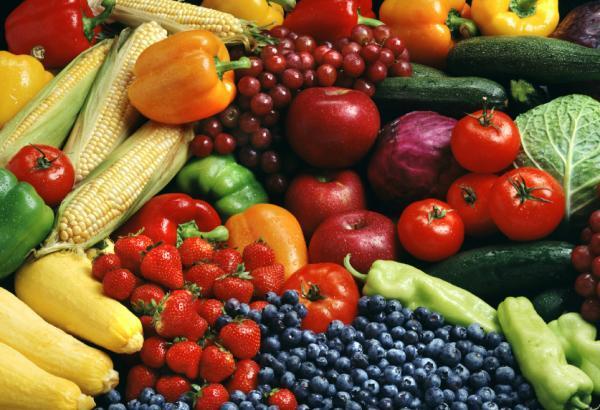It’s essential to consume fruits and legumes of different colors to fully enjoy these foods.
You have to break the food color code:
Blue/dark red (combat the effects of aging)- fruits and legumes in these colors have a high concentration of phytochemicals(anthocyanins and phenols)which are currently studied for their antioxidating and anti-aging proprieties. Including blue and dark red colored fruits and vegetables to help with.
- reducing the risk of cancer.
- beneficially influences the urinary tract.
- improves the memory
- assures a slow and natural aging process.
Keep in mind: fruit and vegetable based diets that also avoid saturated fat and cholesterol, can reduce the risk of some types of cancer.

Blue/dark red fruits and vegetables
- blueberries
- blackberries
- prunes
- elderberries
- figs
- grape
- plum
- raisins
- dark red asparagus
- red cabbage
- eggplants
- chicory
- black pepper
- red potatoes
Green(for an iron clad health)- green colored vegetables have a high phytochemicals content like indole and lutein, which caught the attention of researchers due to their antioxidating proprieties. It’s recommended that each diet includes green vegetables and fruits which help:
- reduces the risk of cancer
- assures a healthy body
- hardens the bones and teeth.
Green colored vegetables and fruits.
- avocado
- green grapes
- kiwi
- lime
- green pears
- artichokes
- arugula (herb with small green leaves, very popular in Italian cuisine)
- asparagus
- broccoli
- Brussels sprouts
- Chinese cabbage
- green beans
- celery
- cucumber
- chicory
- bushy greens (spinach, lettuce, etc.)
- leek
- green onions
- Bama/ Okra
- peas
- green peppers
- spinach
- Zucchini
- reducing the risk of cancer
- combating heart diseases
- maintains blood cholesterol at normal levels
- bananas
- yellow pears
- dates
- nectarines
- peaches
- cauliflower
- garlic
- ginger
- jicama
- mushrooms
- onions
- parsnip
- potatoes
- kale
- corn
- maintain a healthy heart
- ensures a healthy body
- strengthen the immune system
- reduce the risk of cance
- yellow apples
- apricots
- melons
- gooseberries
- figs
- grapefruit
- lemons
- nectarines
- oranges
- mango
- papaya
- peaches
- yellow pears
- persimmon
- pineapple
- tangerines
- carrots
- yellow peppers
- potatoes
- pumpkins
- corn
- maintaining a healthy heart
- improving memory
- reduces the risk of cancer
- helps the urinary tract
- red apples
- red orange
- cherries
- cranberries
- grape tomatoes
- red grapefruit
- pomegranates
- raspberries
- strawberries
- watermelon
- red beet
- red pepper
- radishes
- red onion
- red potatoes
- tomatoes
White and brown fruits and vegetables contain alicina, which is found especially in onions.white and brown fruits and vegetables are recommended in any diet because they help in:
White/brown fruits and vegetables
Yellow and orange fruits and vegetables have a high antioxidant content. They contain vitamin C, carotenoids and bioflavonoid. Including orange and yellow fruits in your diet is very important because they help:
Yellow and orange vegetables and fruits
Red fruits and vegetables also help with
Red fruits and vegetables
For more information check out The color diet: healthy eating by colors

February 2, 2010
Diets & Nutrition